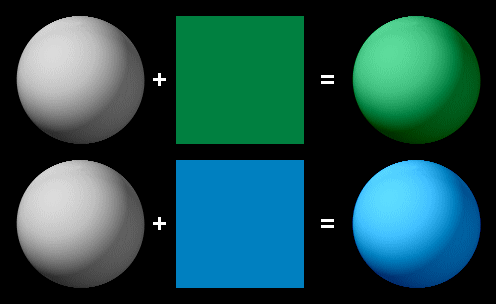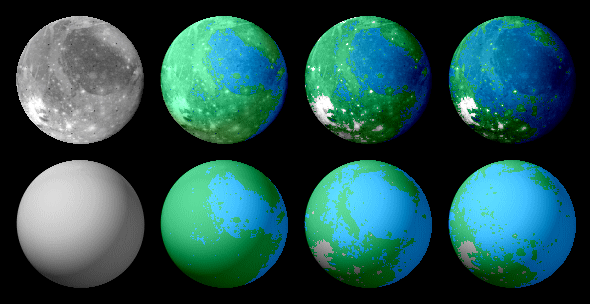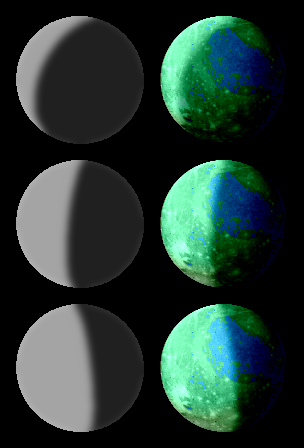The Making Of: Tiny Planet Pack
I thought it might be interesting to break down some of the processes behind each graphics pack from Screaming Brain Studios! Starting off with some 2D planet techniques that I use for my tiny planets. The techniques behind these Tiny Planets differ from the ones used to make the larger 2D Planet Pack in a number of ways.
For starters, let's take a look at the most basic way I create some of the terrain and surface coloring for the imaginary planets. I tend to start off with a Spherical Gradient, selecting the particular shading I would like to use from a number of different angles. Applying a solid color to this gradient results in some rather nice looking colored spheres I can begin working with.

With these two (potentially three, if you include the gradient itself) colored sphere textures now ready, I can select a planet style from a pool of grayscale height mapped planet surfaces. These have all mostly been made by taking a public domain image of an area on one of the solar system's many moons or asteroids, applying it to a sphere, and rendering a 2D image. The result is a round, planet shaped grayscale image that I can now use as a mask to map or blend my textures with.
The simplest example of this would be to simply blend or merge the grayscale planet mask with my spherical texture to get a single color image, like below:

This on its own isn't particularly impressive or useful, but once I start applying blending values between the different colored textures using the light/dark areas of my planet mask, the results start to get a little bit more interesting. By combining both the green and the blue textures, we start to see some land masses take shape surrounded by water.

We can take the original spherical gradient and use it as a third color, "white," and give a little bit of definition to the brightest areas of the grayscale mask, which will result in the appearance of snowy mountain tops in the final render. In the example below, you can see all the different variations that are possible by adjusting the brightness of the grayscale planet mask. In addition, blending the colors/textures where the light and dark areas appear in the mask, but not applying the actual shading of the mask to the final render, the resulting output comes out nice and smooth while still displaying the land masses and water as they should be.

As a finishing touch, I've also rendered a number of variations using a 'moon phase' style shading mask which gives the impression of light shining from different directions, or if you are using the planet as part of a background, the different shadow phases you might see as the planet is orbiting in the sky.

I tend to prefer this method over wrapping a texture to a 3D sphere and rendering it to 2D, though some of the realistic planets in this pack were made this way. Don't forget, you can check out some more tutorials on how to make more 2D Planets, as well as a number of other graphics at the official Screaming Brain Studios Website!

Leave a comment
Log in with itch.io to leave a comment.